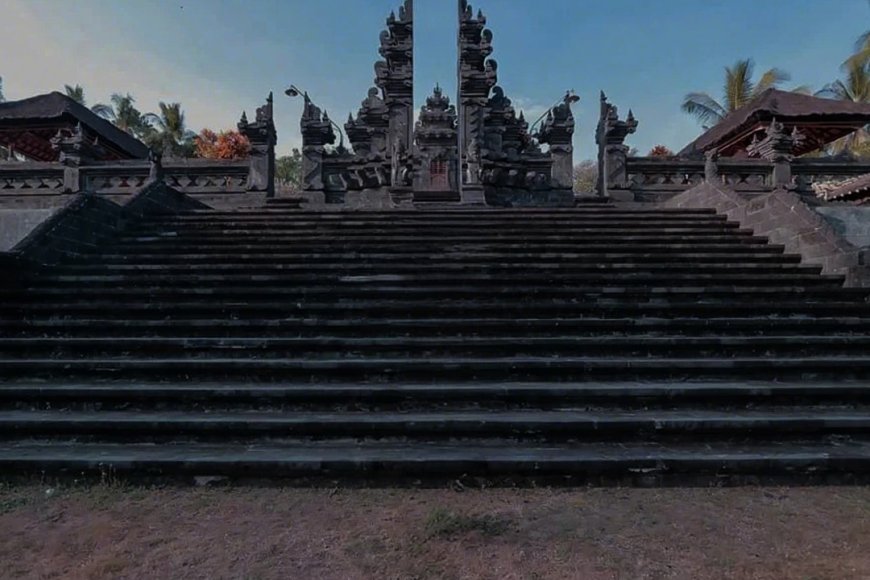Edu-tourism Potentials in Les Tourism Village
Les Tourism Village in East Buleleng, Bali, showcases natural beauty and cultural heritage through attractions like Yeh Mampeh Waterfall, Puseh Panjingan Temple, and traditional salt-making known as Garam Palungan. This destination offers a unique edu-tourism experience, blending natural splendor with local wisdom.

Discussing the charm and potential of North Bali, especially the Bumi Panji Sakti area, is never tiresome when visiting. East Buleleng is less known for its tourist attractions compared to West Buleleng. Let’s explore tourism in one area of East Buleleng: Les Village. This village has grown significantly in tourism, earning the title of "Les Tourism Village." In fact, Les Village was nominated in the top 50 in the National Tourism Village Awards (ADWI) in 2024. Located in the Tejakula sub-district, Buleleng, Bali, Les Village not only boasts stunning natural beauty but also offers unique educational experiences for visitors. The edu-tourism potential in Les Village is highly appealing, especially with the increasing public interest in educational tourism.
The slogan "Uniqueness Becomes Attraction" perfectly describes Les Village. Among the village’s historical learning resources are sites like the Puseh Les Penuktukan Temple or Puseh Panjingan Temple, which is now a national cultural heritage site. This temple marks the origin of Les Village's history and the bond of friendship between Les and Penuktukan Villages. According to historical records, Les Village was formerly known as Panjingan Village. Due to its coastal location, "Panjingan" is believed to be derived from the word manjing, meaning "to enter." It was once considered a port of entry to Bali Dwipa and frequently visited or passed by traders from outside Bali.
One of the memorable stories is that cockfighting was a common form of entertainment in the village, attracting not only locals but also the Bajo people (known as Wong Bajo), who were seafaring people. At one point, a conflict arose after Wong Bajo suffered a loss in a cockfight. Over time, as a result of these conflicts, some villagers relocated. The formation of Les and Penuktukan Villages followed, with Pura Puseh Panjingan serving as a symbol of their longstanding bond. The temple not only provides spiritual value but also teaches us that broken relationships can be healed and strengthened through shared faith.

Picture of Puseh Temple of Les Village (Source : Private Collection)
Beyond its spiritual appeal, Les Tourism Village offers beautiful attractions that are assets for the community and its visitors. One popular attraction is the Yeh Mampeh Waterfall, a name that translates to “Flying Water” due to its impressive height of over 30 meters. Blessed with natural resources, the villagers are committed to maintaining Yeh Mampeh’s pristine condition, surrounded by the Tangudi and Pungsu hills. Before reaching Yeh Mampeh, visitors can stop by Toya Anakan Spring, a water source with deep spiritual significance for the Hindu community in Les Village, as it is often used in Yadnya ceremonies.

Picture of Yeh Mampeh Waterfall (Source : Private Collection)
One of the local wisdom traditions that has become a long-standing culture up to this day is salt production, which still uses ancient techniques in its process, known as Garam Palungan. This saltmaking method is called Garam Palungan because one of the tools used is called Palungan, which serves as a medium for seawater to be sun-dried, becoming nyah, the result of distillation in the tinjungan. The Palungan is made from old coconut tree trunks aged over 50 years. This Palungan has been a heritage for a long time, and over time it has become difficult to find coconut trees aged over 50 years, not to mention that making the Palungan itself is very difficult. There have been several methods and innovations to replace the Palungan salt production process by using geomembrane due to the many heritage Palungan tools that have become brittle. However, there are still advantages and disadvantages, as using geomembrane makes it more practical for salt farmers in production nevertheless, in terms of taste or quality compared to geomembrane, the results from Palungan are shown to be superior, producing cleaner salt that doesn’t taste bitter. Introducing the Garam Palungan process, which is an ancient salt production technique, has become a unique attraction for tourists, as well as increasing knowledge, especially for us, the younger generation, who will continue and empower the potential in Bali, particularly in Les Tourist Village.

Picture of Garam Palung (Source : Private Collection)
Les Tourism Village in East Buleleng, Bali, offers remarkable edu-tourism potential with its unique history, spirituality, and cultural heritage. The natural beauty of Yeh Mampeh Waterfall, Toya Anakan Spring, and the rich history of Puseh Temple make this village an enriching destination. The local wisdom reflected in Garam Palungan salt production adds an invaluable lesson on preserving cultural heritage, making it an attractive destination for those seeking both knowledge and natural beauty.






























































